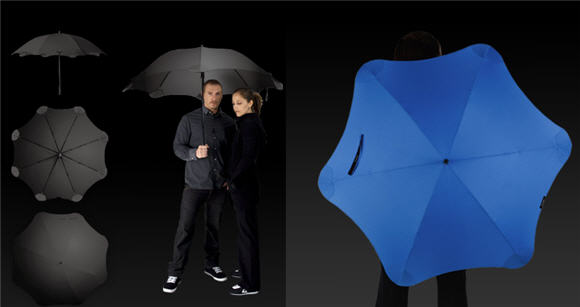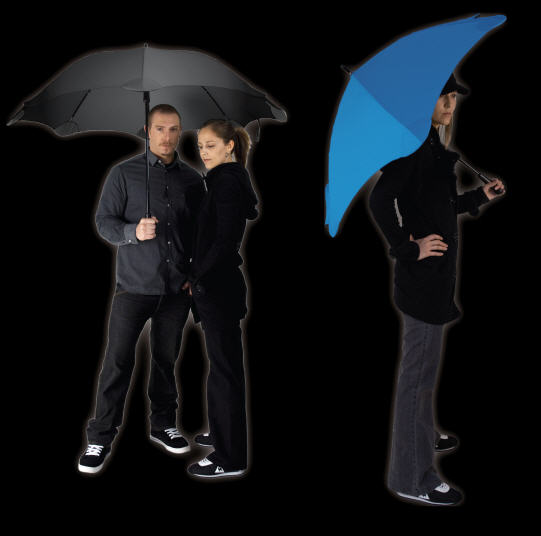Much as I liked the durability of the Senz Umbrella, its shape (which forced up to 70mph wind to slide off) was exceptionally weird-looking. That’s why the Blunt Umbrella, which can withstand the same strain, seems a much better solution – there’s no aerodynamic abomination with a few useful updates to boot.
How does it brush off the raging gush of high-pressure air? Blunt Technology calls their improvements the Radial Tensioning System, which spreads the force of the wind along the outer edge of the canopy, where the surface area is highest. Using a mix of various innovations, including floating ribs (made out of fiberglass) that are detached from the umbrella shaft and double struts, the design gives it a rigid profile that keeps the rainy day accessory from turning inside-out during particularly windy days.
So why is it called Blunt Umbrella? The name actually has nothing to do with its unusual stability. Instead, the billing refers to the most obvious visual update from regular models: blunt tips at the outer edges. If you’ve ever been poked by one of those pointed spikes on umbrellas, you’ll appreciate their absence here. As a secondary function, the blunts help keep the canopy from tearing at the rib point, further assisting the ability to withstand harsh weather.
The brainchild of New Zealand designer Greig Brebner, the initial goal for the project was as straightforward as it got: to design a better umbrella. Judging from the results, it was a success in every single way.
Testing was done at the Force 12 wind tunnel, where the Blunt Umbrella withstood the maximum force settings (70 mph) inside the facility. It’s available in three sizes (Standard, Golf and XL) and in three colors (black, gray and blue). Prices range in the equivalent of $70 to $79.


